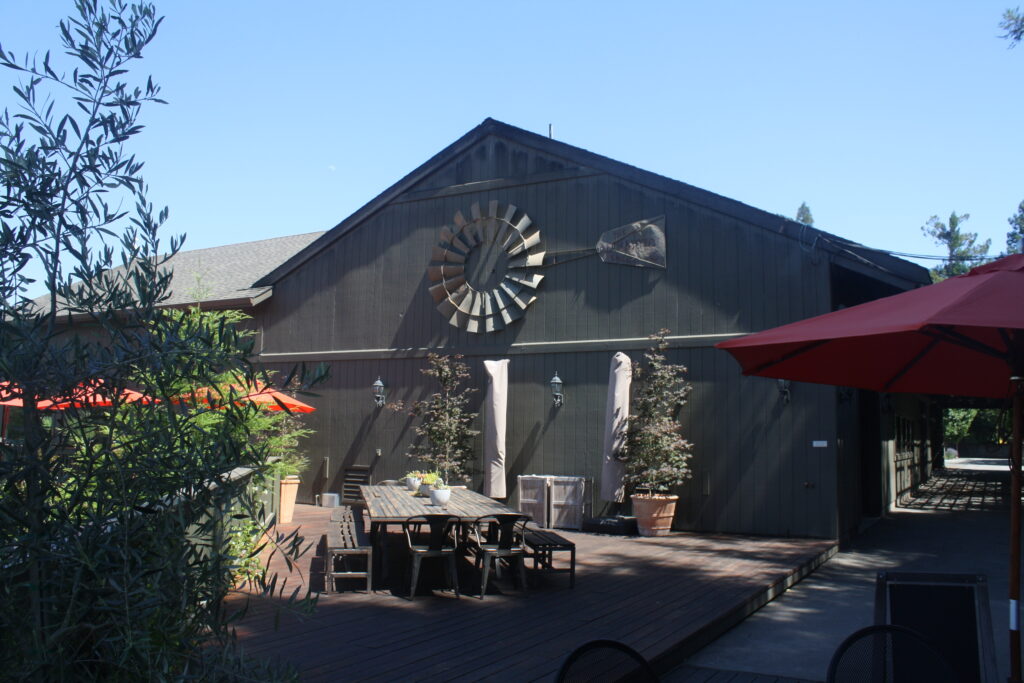Power Tasting reported on wine tasting in Santa Barbara several years ago; this edition is an update of sorts. At that time, we visited the Margerum tasting room, then at the El Paseo complex. The wines were enjoyable but the room was on a dark alley and it was dark and uninviting inside as well. Power Tasting’s policy is that we don’t print bad reviews; we believe that silence is the best way to deal with wineries that we couldn’t recommend. So we never said anything about Margerum at that time.
The entrance and one of the patios at Margerum Wines.
Margerum (https://www.margerumwines.com) has moved, somewhat surprisingly, to the Funk Zone. But their tasting room in Santa Barbara is anything but funky. (They also have a tasting room in Los Olivos that we haven’t visited.) From the elegant, soaring entrance to the broad, capacious room inside, the message is: “Margerum makes serious wine and should be taken seriously”. [Is the Funk Zone evolving? Time will tell.]

The interior of the tasting room at Margerum in Santa Barbara.
The overall ambiance is that of Spanish-accented lounge at a fancy resort. There is a wide bar, terraces in front and on the side, and a separate section above for groups and parties. Perhaps it would be more appropriate to call it a restaurant at resort, because Margerum also has a rather extensive menu. Many wineries will offer a cheese and charcuterie plate, as does Margerum, but this one also has a lengthy list of hors d’oeuvres, sandwiches, salads and pizzas, all prepared on the premises.
All of this would mean nothing if the wines were subpar. While Power Tasting doesn’t review wines as such, we can say that there were several that we enjoyed quite a bit. While Margerum does offer Pinot Noirs and several Sauvignon Blancs, their specialty is wines made from Rhône-style grapes. Our favorites were the Pinot Noir from the Sanford-Benedict vineyard, their Reserve Syrah and particularly their Mourvèdre. The Margerum Rosé is also quite Rhône-like.
Doug Margerum, the winery’s founder, is a Central Coast wine pioneer and continues to advocate for and consult to other vineyards in the area. He has started a second label, Barden, using his middle name for these wines. The intent, according to their web site is “an exploration of cold climate grapes grown in and around the Santa Rita Hills AVA”. We didn’t enjoy them as much as the Margerum-labeled wines. We visited the new tasting room on a weekday and so can’t speak to the weekend when the Funk Zone fills with partiers. We were told by our sever that weekends get quite crowded. We don’t understand why the decision was made to relocate to an area better known for high times than fine wines. We prefer to taste wine in an environment that to some degree replicates the atmosphere of a dinner party in our home: a happy buzz of conversation but not the clang of a wild night of drinking. We can only advise that wine lovers visit Margerum and do so on the days of the week that best fit their temperaments.
















